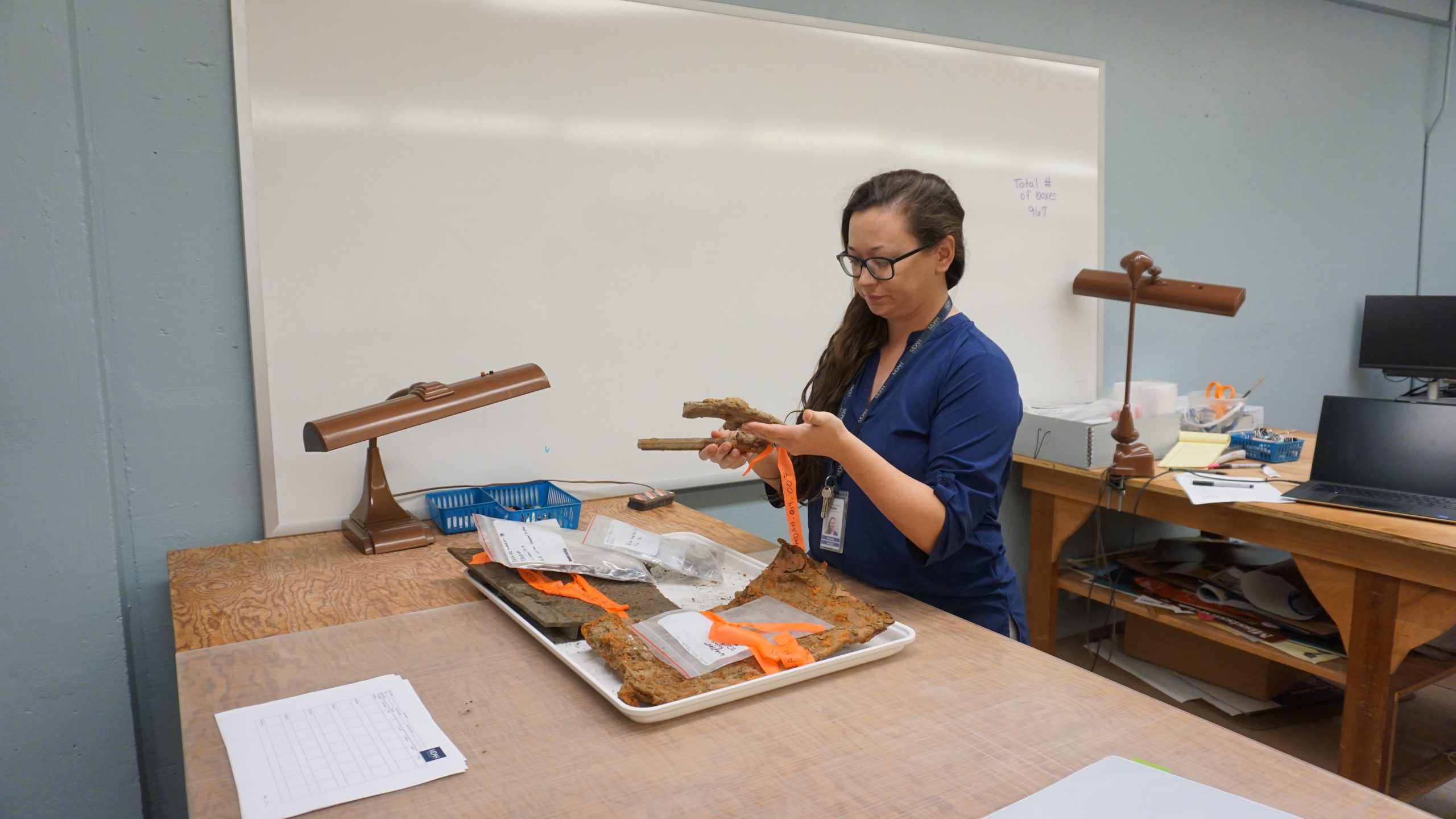The Mississippi Department of Archives and History has returned 95 human remains and 1,500 funerary objects to the Chickasaw Nation as part of a federal law requiring repatriation of indigenous remains and burial items.
The Native American Graves Protection and Repatriation Act requires federal agencies and federally funded institutions to return cultural items and human remains to lineal descendants, Native American tribes, Alaska Native villages and Native Hawaiian organizations.
Following the law’s guidelines, MDAH identified and created a summary of all the cultural items and remains in its possession. Then, it consulted with the Chickasaw Nation to return them. MDAH consults with other tribes to return their remains and cultural items as well.
According to Amber Hood, the Chickasaw Nation’s director of Historic Preservation and Repatriation, the remains and funerary objects will be reburied at or close to their original resting places.
“Our people believe there is a spiritual disturbance that occurs when the remains are dug up and put on display, and slowly but surely we are doing what we can to right that wrong and return our family members to continue their spiritual journey in peace,” Hood said.
In the 19th century, white Americans trying to expand westward were stopped in part by Native Americans. Under President Andrew Jackson, the federal government took up Indian removal as a major issue.
Congress passed the Indian Removal Act in 1830. It allowed the president to trade land west of the Mississippi River for Native Americans’ ancestral homelands. This forced indigenous tribes like the Chickasaw to move.
The Chickasaw received compensation for the sale of their lands, allowing them to pay for their own removal. They departed their ancestral lands in the Southeast for Oklahoma starting in 1837. They were forced to leave their buried loved ones behind, Hood said.
For generations afterwards, it became commonplace for researchers and graverobbers to excavate Native American graves and study or sell their contents.

Congress passed the repatriation act in 1990 to stop this practice and return the artifacts and remains to their original tribes. However, noncompliance is a persistent issue. Critics say the law impedes scientific research on ancient humans, and some institutions lack the funding to begin repatriation. Many museums and federal agencies did not report their inventories to the federal government.
Chief Archaeologist Cindy Carter-Davis with Archives and History argued that concerns about research were being used as a deflection.
“We’ve been doing archaeology in the United States, in the Mississippi, for 200 plus years. There’s little new that can be added to the record from human remains. We do not analyze them anymore, that is not a generally accepted practice,” she explained.
MDAH’s repatriation efforts were held up for years because it couldn’t afford to hire the additional staff, Carter-Davis said. The department was able to begin in 2018 thanks to grants from the National Park Service.
The Biden administration updated the rules in 2023. The new guidelines give more power to indigenous communities and close some of the loopholes federal agencies and museums used to avoid repatriation.
Hood described repatriation as a human rights issue.
“It’s very disheartening to go through the process of proving that our ancestors’ remains belong to us and do not belong to museums or institutions,” she said. “But it’s out of love that we advocate for our ancestors to be returned, and we will persevere because it’s the right thing to do.”

